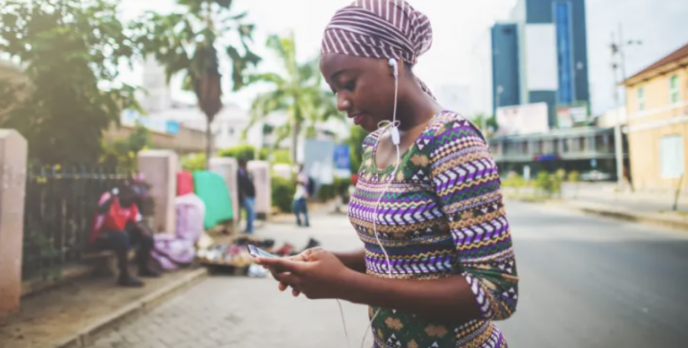Opinion: How to adapt to remote research methods in rapidly changing circumstances

Author: Roxana Elliott, Amanda Berman, Scott Lansell
Throughout the international development and humanitarian community, COVID-19 is forcing organizations to adapt their research to fast-changing circumstances.
Existing programs have had to shift their monitoring and evaluation, or M&E, activities to methods that can be conducted both rapidly and remotely, while humanitarian agencies have been faced with an immediate need for data that measures the specific impacts of the pandemic. There has also been an increased focus on ongoing data collection and adaptive management rather than utilizing baseline, midline, and endline metrics for data-driven decision-making, due to the rapid evolution of on-the-ground situations.
This dual need to ensure existing programs continue uninterrupted while also tracking new indicators on an ongoing basis has led the development community to embrace remote, mobile-based data collection systems including voice calls and text messaging surveys. This has been a dramatic shift from prior years, when face-to-face research was the standard for M&E and other research areas and technology-based solutions were incorporated less often or as an experimental method.
Suddenly, remote data collection is the only option in many circumstances. As more organizations learn the nuances of various remote research methodologies, it is likely to become more widely utilized, even after the pandemic subsides.
How remote data collection differs
Remote data collection is a way of gathering data on program impacts, household preferences, and more without needing to deploy in-person researchers. Remote data collection tools leverage existing, often basic, technologies such as voice calls and text messaging to conduct surveys.
The mobile phones used can be either devices distributed by specific programs or existing personal mobile phones. Both methods have their challenges.
When distributing phones, programs must oversee phone distribution and maintenance. However, using personal mobile phones limits research to the mobile-owning population. Although mobile penetration has grown in low- and middle-income countries in the past few years, mobile phones still tend to overrepresent younger, male, urban, and more educated groups, and this should be addressed in the research design.
Considerations for transitioning from in-person to remote data collection
COVID-19 has accelerated the move to remote data collection tools, but many of these tools have been in use for several years, and there are proven best practices that should be adhered to in order to improve research outcomes. Whether transitioning existing research projects to remote modes or starting from scratch, organizations should carefully consider the survey mode, population being studied, questionnaire design, and other factors such as cost and data collection timelines.
1. Survey modes. Within remote data collection, there are several modes that can be used, and each has unique characteristics.
Key characteristics of text messaging surveys include: Surveys are sent one message at a time, allow respondents to answer at their leisure, are best suited to short questionnaires, and can only reach literate populations. Voice calls can be administered through computer-assisted telephone interviewing, in which trained interviewers conduct live calls, or interactive voice response, which uses a prerecorded voice system to ask questions.
CATI most closely resembles face-to-face interviews as it allows for longer interviews, follow-ups by the interviewer, and reaching illiterate populations, and it has therefore emerged as the favored method for those transitioning projects from in-person methods. CATI is currently being used by a range of organizations for studies related to both M&E and the coronavirus.
2. Population. The population being studied is impacted by the mode and sample source. If organizations have their own lists of program participants and corresponding phone numbers, they can be utilized but have varying success rates. For voice call surveys, many companies employ random digit dialing methods to generate lists of phone numbers.
Companies such as GeoPoll have connectivity to mobile network operators, which has enabled us to build large databases of mobile subscribers that can then be used for both general population studies and more targeted ones.
By leveraging remote data collection with care now, organizations will set themselves up for success in the long term, enabling them to make faster, more timely, and better informed decisions that help populations in need.
—
3. Questionnaire design. Finally, questionnaires must be designed to be administered remotely, which means they will look different from in-person questionnaires.
For example, while CATI can support longer questionnaires than text messaging and IVR surveys, it must be able to be administered over a voice call without the use of visual aids. Text messaging surveys have limitations surrounding both overall questionnaire length and individual question length, and studies have shown they do not capture question types such as “select all that apply” and other modes.
While technologies such as our multimodal platform can support many question types along with complex routing options, questionnaires should be designed with inputs from mobile research experts.
The ongoing impact of remote research
Remote data collection methodologies are being turned to now when researchers have limited options, but as more programs test and utilize these methods, the knowledge around remote methods will improve, enabling more programs to use them with a better understanding of their characteristics. There is also increased demand for solutions that can gather timely and frequent data around key indicators and trends on an ongoing basis, rather than at set points during a project life cycle.
These facts, along with the ever-growing penetration of mobile around the world, make it clear that remote data collection strategies are here to stay, even after the impact of COVID-19 diminishes. By leveraging remote data collection with care now, organizations will set themselves up for success in the long term, enabling them to make faster, more timely, and better informed decisions that help populations in need.

